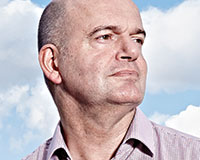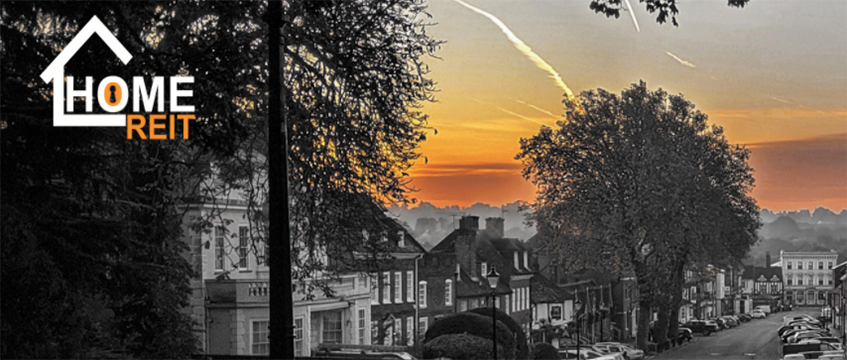“Sometimes it has to come down to the steel in your backbone,” says Richard Margree. As chief executive of Hong Kong-based developer Knight Dragon, he – and the success of his company – is riding on this statement being true.
The company is taking a giant leap of faith at Greenwich Peninsula to deliver 10,000 homes on a site where UK developers have failed to put a single unit in over a decade.
This might be Knight Dragon’s first large-scale regeneration project in the UK, but Margree is convinced that to be successful you just have to have a vision, take the leap and cut the cord.
Sitting in front of the oversized window on the second floor of the Greenwich Peninsula marketing suite, a giant looms behind him. The O2 dome, omnipresent on the site, is a fitting reminder that big visions can become a reality, but often at a price. Silhouetted against its outline it could either be a halo for Margree or a crown of thorns, depending on your point of view.
For most developers – even the big ones – this would be a vast project spanning generations, a lifetime’s work, with units metered out in a steady drip with steady pricing control.
For Knight Dragon’s it is a project to deliver all in one go. Work is under way on 500 homes, and a further 1,100 have outline planning. Put another way, that is half of all homes started in the entire borough last year, on one ?single site.
Margree hasn’t just thrown the rule book out the window, he has shredded it and is eating development proposals for breakfast.
But then this is a company backed by Hong Kong entrepreneur and billionaire Dr Henry Cheng Kar-Shun, who has a net worth of £10.3bn. Across Hong Kong and China, Cheng is known for his property and infrastructure projects including a majority interest in the £6.9bn New World Development company.
These are big-deal figures. And while the company is little known here in the UK, it is unlikely to stay that way for much longer if its development plans are anything to go by.
Upsetting the apple cart
So, what is Knight Dragon? It seems that, for now at least, the competition don’t really know what to make of it. Agents applaud the supply in a stock-starved market, but as a new entrant, can it deliver on what is essentially the hinterland of London?
“It’s such a huge site and the brand is ambiguous, is it the O2, is it former industrial land, is it an extension of Greenwich? It has a clear lack of identity,” says Adam Challis, head of residential research at JLL. “But it is going to force some UK developers to revisit their business models and sharpen their pencils a bit.”
Developers, although never on record, wonder why Knight Dragon is upsetting the apple cart. “Have they heard of phasing?” says one.
So, have they? Iain MacGregor, the firm’s development director snorts. Margree shrugs. “That’s probably our reaction to that,” ?he says.
Margree is too good humoured to say it, but there’s a sense that he’s tired of the questions. What is Knight Dragon? Why has it landed in Greenwich? And what on earth is it doing delivering that many homes so quickly?
“We are not in the game of mindless spec development. There is a method to this madness,” he says. “We’re going to build and release as we deem fit and we don’t have any concerns about what we are bringing to market initially in terms of quantum.
“We’re super keen not ?to make this a bit like ?Canary Wharf or Shoreditch, and this is not Hong Kong-on-Thames.”
Assumptions of arrogance
Margree’s drive and ambition could easily be mistaken for arrogance. The firm has kept most people at arm’s length, especially the media.
It is a surprise this interview is happening at all. There have been two cancellations and even on the day, the venue for the interview is changed twice as Margree and MacGregor hide out from cameras who’ve paid a visit to the press launch of the site. In the absence of contact, people have filled in the gaps themselves, often making quite wrong assumptions about what Knight Dragon is and what its silence means.
“We don’t want to be compared to anyone else. People talk about comparables and valuation and delivery and say they are talking from experience, but we’ve got an idea for this place and we’re just going to do it.”
Knight Dragon first became involved with the site in July 2012, taking a 60% stake from Lend Lease. It quickly realised that if the site was going to deliver, it needed sole control, which it got after buying out Quintain’s stake in what Margree describes as a “consensual deal” at the end of last year.
The site – the size of Vauxhall in London, says Margree – was genuinely forgotten about, hidden behind a green wall on the main thoroughfare from visitors walking between the tube and the dome. How else, he says, with disbelief, could you get 150 acres in London, in zone ?2, by a tube station, 20 minutes from Bond Street, wrapped by the River Thames and a blank canvas. “It was a total surprise that a site of this size, scale ?and opportunity was there and you would not end up infilling bits and bobs, and could start to create a vision from the ?first brick.”
It might not have been just the green wall that put off other developers. Margree says: “You can’t take this to a bank and say, ‘Are you interested?’ It would say, ‘not remotely’.”
Pure equity funding from Hong Kong has taken that weight off. “We don’t have a return requirement each quarter or each year. This is not fundable in any other way than by equity. Henry has the vision to write the equity cheques to support this thing,” says Margree, adding: “Henry realises that if you get this place right from a profit point of view, it is a smart thing to do.”
Why ‘plod around the clock’?
Knight Dragon’s first job was to take down the wall and put up a statement building, its multi-storey Hub, with cinema room, gallery, neon model of the scheme, rooftop champagne bar and marketing suite.
In July it submitted plans for 1,000 homes and the first tranche of three residential towers is already going up (see box). On 20 September it launched these to the public, 194 units on the market priced between £250,000 – 1.7m. People camped out and ?queued around the block to buy them and the lot went on the first day. One commentator said “it was crazy, the queue was massive, it looked like an iPhone launch”.
The launch was quite deliberately a UK-London launch but Knight Dragon is not turning its back on overseas sales. “Whatever people’s motivation for buying we shouldn’t be too precious about what or where they come from,” says Margree. “It’s a dumb way of looking at things, should we propose xenophobia clauses?”
Not everything will be for sale. The idea that you can build an estate of 10,000 homes, for around 20,000 people and have mono tenure is ridiculous, points out Margree. Instead, there will be high and low priced buildings, like any other market in London and if someone wants to rent directly from Knight Dragon, then Margree says “we’re not dismissing anything, try before you buy is a perfectly smart and sensible approach.” But it won’t be looking at a traditional PRS model, forward-selling buildings to institutions “is handing away the profit and the control” says Margree, and it won’t be designing buildings so they ?can only be rented out. “You might maximise the space but you are creating something that can only be used for that purpose, so we’ll fit out in the normal way rather than worry about the colour of the grout,” he says.
Knight Dragon isn’t deliberately trying to change the model for home delivery in London, explains Margree, and it could do the plod around the clock, as he calls it, phasing and working its way around the site, ratcheting up the price slowly, but if you want to increase absorption you need to build in different areas at he same time, and “we see it as the smart thing to do”.
Development director MacGregor adds: “We haven’t got the hammer of a 20% internal rate of return hanging over us.”
For now, Greenwich Peninsula is enough, and despite many approaches Knight Dragon is not looking to spread its wings further. The project, says MacGregor, has been below the radar locally, regionally and nationally, but that could change. He says: “Everyone is talking about Battersea, they are going to stop very soon.”
Who are Knight Dragon?
Knight Dragon is owned by Dr Henry Cheng Kar-Shun, who owns extensive property and infrastructure businesses across Hong Kong and China. His net worth is estimated at £10.3bn.
A team of 20 run the London business, a figure chief executive Richard Margree says will grow, but not massively. Sammy Lee is owner Cheng Kar-Shun’s UK fixer, his man on the ground.
Hierachy in the business is thin and Margree sums it up by saying Henry relies on Sammy, Sammy relies on the team in London, and if Richard tells him it’s OK and he agrees then Sammy tells Henry it’s OK.
“We don’t have KPIs or appraisals or a staff handbook, we’re not emailing each other big brochures, we sit around a table, we find out what Hong Kong says and then do it. We get a firm mandate from them without having to go through layers and layers of administration.
Of course we check everything but things don’t have to immediately make money to make money,” says Margree.











